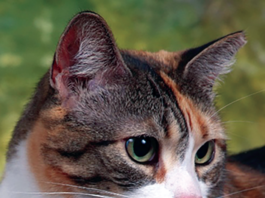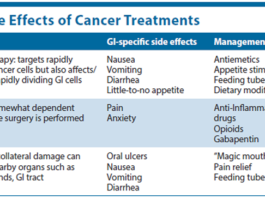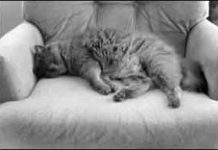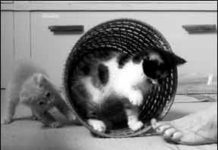Helping Your Pets Beat the Heat!
The vigilant protection of your cat’s safety and good health should be a year-round priority for you. And unless you keep your cat indoors all of the time, the challenge facing you in this regard is likely to be most demanding during the summer months, when temperatures soar in most areas of the U.S. and cats, if given the opportunity, are more likely to wander from the secure and sanitary confines of their homes.
Fire Safety Tips to Take Seriously
It’s human nature to postpone preparing for a disaster, but it’s vitally important that you take time now to put a plan in place before a fire occurs. Start by installing smoke detectors throughout your home and make sure the batteries are functioning properly. Change the batteries twice a year or more frequently if the smoke detector “beeps” to warn you that battery power is low. Many people put in new batteries when they change their clocks for daylight savings time.
Movies for Cats: A Good Daytime Baby Sitter
A bored cat is often an unhappy cat. Just like humans, cats need stimulation; when left on their own too long, they can experience loneliness and even depression. An unhappy cat may lose or gain weight, stop grooming itself or even become destructive. And a cat with nothing to do will often sleep the day away instead of getting needed exercise. For those of us who must leave our pets alone for long hours while at work or elsewhere, the solution could be just a click away: Turn on the TV and put on a movie designed just for cats.
Understanding the Elderly Cat
Thanks to advances in all fields of veterinary medicine, it is not uncommon these days for a cat to live to the very ripe old age of 20 — roughly the physiologic equivalent of age 93 in a human. That’s the good news. The bad news is that cats, like humans, become increasingly susceptible to age-related disease conditions as they grow old, and most of these disorders are bound to have an effect on an animal’s behavior. Arthritis, for example, is likely to cause a formerly rambunctious cat to slow down dramatically as it transitions through its so-called golden years; kidney and urinary tract disease may severely affect its litter box behavior; progressive periodontal disease and tooth loss may alter its eating habits; and progressive hearing problems may make a cat decreasingly responsive to its environment.
Safeguard Your Pets Against Ticks
Ticks are tenacious. They creep up tall grass, weeds and fences — waiting until a passing shadow, a vibration, an odor or even a whiff of exhaled carbon dioxide tells them a possible host might be passing by. Then they let go of their perch and fall, or reach out with their front legs to snag hold of a furry coat (or a pant leg). Once on board, they insert their mouths into their prey and begin their meal. During this feeding, tick saliva mixes with the host’s blood.
Fostering Kittens: An Important Job
Consider this: One cat and her offspring can produce a whopping 420,000 cats in just seven years. Each year, from April to November, hundreds of thousands of kittens are born — often to feral or stray moms that struggle to survive on our city streets, in the suburbs, and in rural areas across America. Without human intervention, most of these newborns will die or lead short, miserable lives. The moms that are not killed by cars, other animals, or disease, will repeatedly become pregnant, adding to the already crushing pet overpopulation problem.
Veterinary Hospice: An Option?
For many years, Katherine Goldberg, DVM, worked in veterinary critical and intensive care units. As she found herself becoming increasingly interested in the stories behind the emergencies, she was moved to make a difference for terminally ill pets. In 2010, she founded Whole Animal Veterinary Hospice Services, a practice whose mission is to provide “compassionate care in the comfort of your home.” She now spends most of her time doing just that. We spoke with Dr. Goldberg at a recent presentation in Ithaca, NY, where her practice is based. What exactly is veterinary hospice? The word “hospice” — which has the same root as “hospitality” — originally meant a place of shelter for weary travelers. In 1969, Elizabeth Kubler-Ross’s groundbreaking book On Death and Dying helped to jumpstart the human hospice movement, and the term “hospice” began to be used to describe specialized care for dying people.
The Latest on Feline Hyperthyroidism
Into the lives of many cats of a certain age comes a certain diagnosis: hyperthyroidism. Susan Steiner’s cat was no exception. At 12 years of age, Grey’s weight had diminished to a mere five pounds. Faced with the less-than-appealing choices of invasive surgery or expensive radiation treatment, she opted for a third choice: medication. Every morning and every evening, Ms. Steiner pulverized a half-tablet of methimazole, carefully mixed the powder with the most appealing canned cat food she could find, and hand fed it to her senior cat. That was 15 years ago. Changes that have since occurred in the world of hyperthyroidism might have made her choices different today.
Cat Fights: What You Should Know
All kittens play, practicing to defend themselves by arching their backs, jumping on each other, chasing each other and maybe exchanging a few nips on the ears. “The difference between playing and fighting,” says Katherine A. Houpt, VMD, the emeritus James Law Professor of Animal Behavior at Cornell University’s College of Veterinary Medicine, “is that when playing, cats will take turns chasing each other. There isn’t one dominant aggressor or one main victim.” In general, however, cats don’t play much after 16 months of age, and males are more likely to engage in play of this kind. As for fighting, cats will fight at any age. “True fighting is usually more of a one-way process,” says Dr. Houpt. “One cat will be the aggressor and the other will be the victim. Hissing, clawing and batting with the paws are more fear directed than playful. The noisier the interaction, the more likely it’s a fight and not play.”
Deworming: A Must for Kittens
Few things in the life of a cat owner are sweeter than the sight of a newborn kitten, weighing just a few ounces, its eyes tightly shut, nursing contentedly at its mothers nipple. A healthy kitten will nurse every 20 minutes or so, typically for about eight weeks, during which time its mothers milk will fulfill all of the little animals nutritional needs
How to Curb Destructive Scratching
Just days after youve invested in new furniture, your cat decides she really loves it, too. Its the place shes chosen to give herself a pedicure, and soon the arms of that beautiful new sofa look like theyve gone through a shredder. You may notice your cat flexing her nails when she first gets up and stretches or suddenly stop to sink her nails into the wall-to-wall carpeting as she crosses a room. She may scratch at the end of a burst of energy after playing with her favorite toy. Fabrics, carpet, wood, cardboard - there are numerous materials in your house that can soon become a target for your cats clawing.
Take Your Cat for a Walk!
Lucky, a striking gray tabby with bright green eyes, touches blades of grass, rolls around on the sunny deck and strolls over to sniff blackberry branches. Its all part of his regular walk around the fenced backyard with his human companion, who supervises his short outings. Since he is not particularly agile, his owner doesnt worry about quick escapes or even a leash. Buckys feline buddy, however, is a different matter. Jade, an agile black cat, loves the great outdoors as much as Bucky, but her athletic prowess easily has her up, up and away in a matter of seconds. Walking Jade outside requires an appropriate harness and leash. Whether you live with a Jade or a Bucky type, walking your cat will bear little resemblance to a conventional walk with the dog. Your cat probably will not like striding along at a brisk pace on a concrete sidewalk. That doesnt mean, however, that taking a walk with your cat isnt a great idea.
















